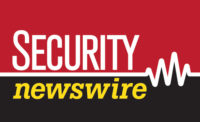Washington spent roughly $6.5 billion last year alone to make air travel safe from terrorism, but that’s not the only expense borne by taxpayers, according to a new report from the Santa Monica-based think tank RAND Corp.
Among those additional costs are state and local police stationed at airports, the amount of time spend by travelers passing through long security lines and the economic impact of new counterterrorism mandates placed on private corporations, according to an article in the Sacramento Bee.
Bruce Schneier, a security expert and longtime Transportation Security Administration critic, says businesses have an incentive to consider such costs – such as cash-register waiting times and the effect security cameras in dressing rooms has on consumer loyalty – so why shouldn’t the TSA? He also says, in the Sacramento Bee article, that government officials are afraid of the political consequences of a terror attack occurring after a seemingly wasteful or controversial security measure is removed.
Patience from the public could wear thin as authorities pile on more layers of security for each new threat, the report says.
“More complete understanding of the costs and benefits of security measures is needed,” the report concludes. “Only with clear understanding of what security measures truly cost and what we get when we buy those measures will it be possible to get close to the efficient security we must aspire to in a world of finite resources and many varied policy areas that demand funding and attention.”
The report also claims that the magnitude of risk posed by terrorism to the aviation industry has never been well understood, so it’s difficult to determine how successful one security measure is over another. It’s also difficult to know how much the additional security officers, costly baggage screening machines and controversial X-ray body scanners have contributed to improved security, the article says.
The researchers suggest using a cost-benefit analysis that relies on estimates can help in comparing one security measure to another before major investments are made.
It also remains difficult to ascertain how much Americans are paying for airline security beyond the $6.5 billion spent annually by the TSA, but RAND researchers point to a few examples:
The police department at the Los Angeles World Airports, which owns and operates three airports in the LA area, had a 2010 price tag of $100 million. A 2006 total for the Port Authority of New York and New Jersey, which operates the region’s major airports, climbed to more than $450 million. The International Air Transport Association estimated in 2002 that costs to the airline industry for security reached into the billions of dollars. Researchers complained about a shortage of reliable spending data, but it’s clear that additional overlooked costs are substantial, the Sacramento Bee reports.






